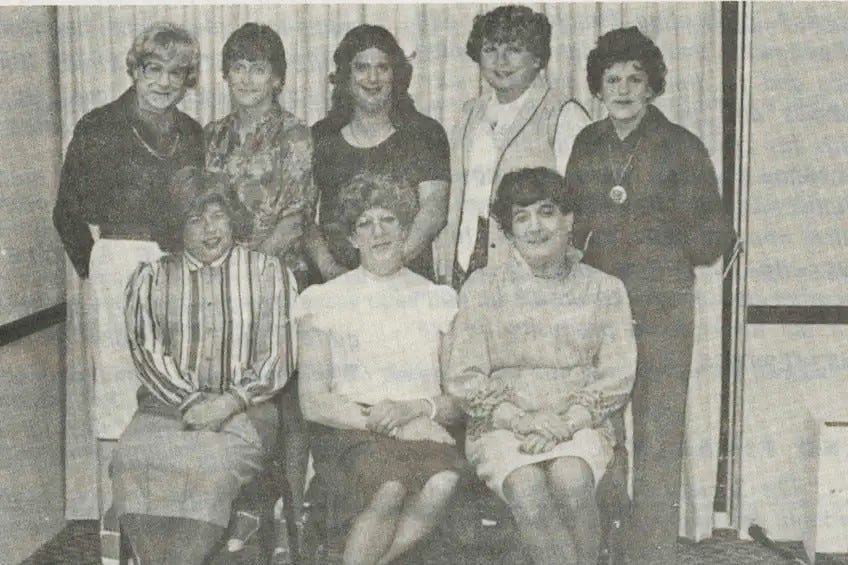Tri-Ess and the Heterosexuals Who Organized the Trans Movement
Where have all the crossdressers gone?

“Hello, my sisters!” said a man who called himself Virginia Prince in his keynote speech at the Coming Together—Working Together convention in Chicago on March 7, 1987.
Prince, born Arnold Lowman, was speaking to other men who identified as either transvestites or transsexuals. According to the Book of Program Transcripts by the International Foundation for Gender Education, the goal of the conference was to “promote self-validation and self-respect, to develop a sense of togetherness and working together to benefit all.”
To this end, Prince called on various members of the loose community to forget about their differences and join together for one common cause:
The various types of people that make up our sub-culture should, therefore, recognize that we have a common opponent and that we would all be better off if we could present a common front to society in the hope that it could learn to understand us, hopefully to accept us, but as a minimum, to just let us do our thing. But to bring this about we have to stop confusing society with multiple presentations and differing explanations which induce society's negative reactions. To do this we have to find the common denominator between gay and straight CDs [crossdressers], and between full-time TGs [transgenders] and pre- and post-op TSs [transsexuals]. In short, we have to markedly reduce the internal strife and polarization between the various types of CDs and like to the collimated beam of laser light, all of us face in the same direction and realize that the real antagonist is not each other but social ignorance, misunderstanding and opposition. We have to find what we all have in common and present this to society in such a way as to educate its ignorance, provide a rationale for its understanding of our cross-dressing and thereby undermine its opposition.
This conference, and Prince’s speech, are an example of how trans activism was developing concurrently with gay rights activism for several decades before it went mainstream. Others might argue that some gay rights activists and feminists helped the trans rights cause and therefore bear some of the blame, and this is absolutely true. But it’s impossible to say one or both led to the other.
Keep reading with a 7-day free trial
Subscribe to The Distance to keep reading this post and get 7 days of free access to the full post archives.


